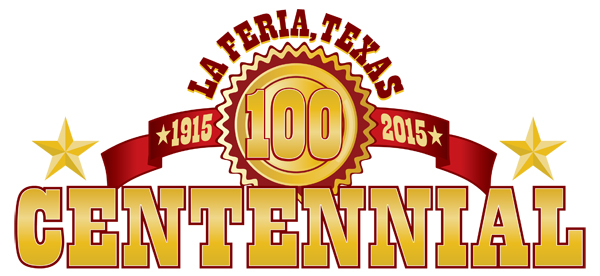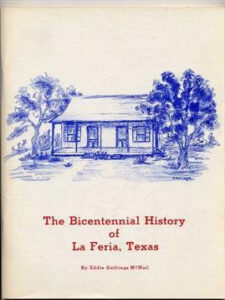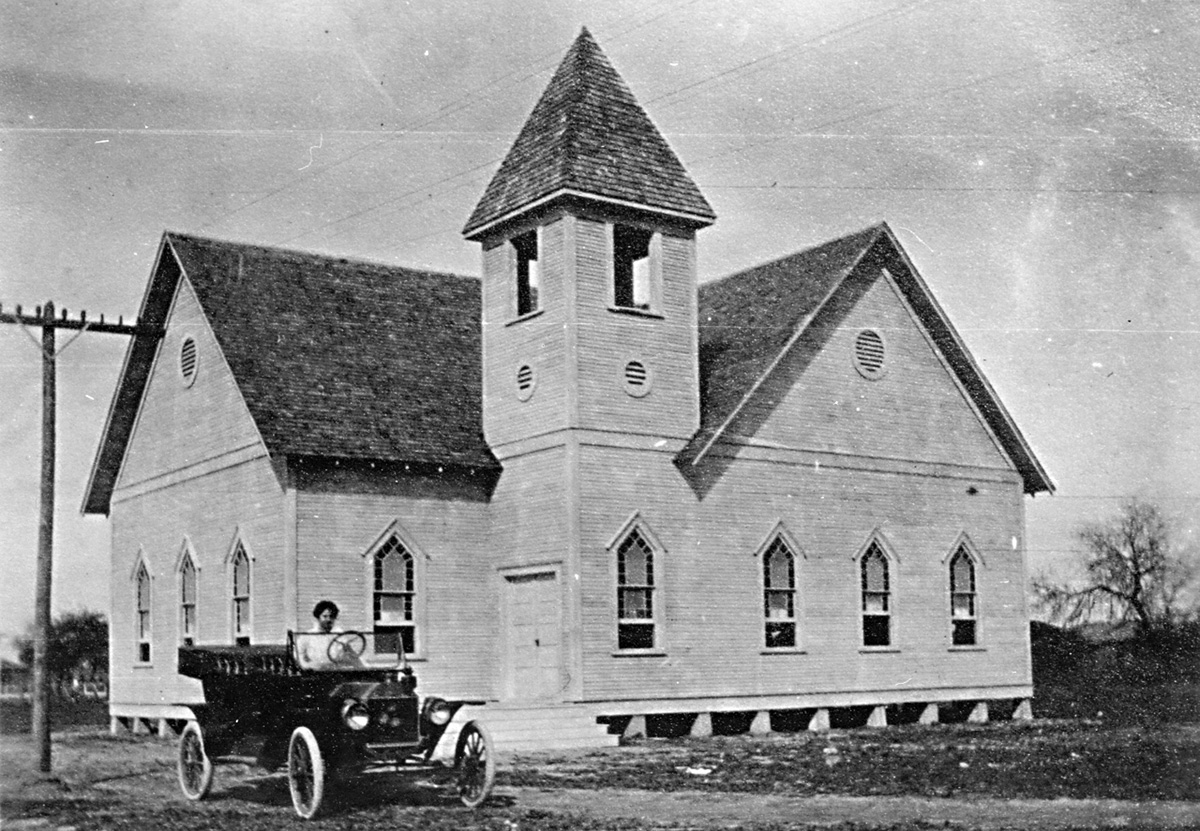- La Feria Community Holds Succesful Business Mixer Event
- Little Nashville to Take Place in Downtown Mercedes
- Lions Basketball Captures District Gold
- La Feria ISD Students Compete in Regional Chess Tournament
- Lions End First Half of 32-4A on a High Note
- La Feria ISD Held Another Successful Parent Conference
- Strong Appearance for Lions at Hidalgo Power Meet
- LFECHS Students Get to Meet Local Actress
- Students Participate in Marine Biology Camp
- Two LFECHS Students Qualify for All-State Band
The Union and the First Methodist Church: Part One
- Updated: September 25, 2015

The city of La Feria is celebrating its 100th year anniversary and to commemorate the occasion we are digging deep into our archives each week to bring you images and stories from La Feria’s colorful past.
 |
The following story is a chapter from a manuscript entitled The Bicentennial History of La Feria, Texas written by Eddie Gathings McNail in 1975. Throughout the coming year we’ll be reprinting sections of her research into the history of La Feria as the city celebrates its 100 year anniversary. |
Editor’s Note: For the next few weeks we will be publishing Ms. McNail’s prodigeous chapter on the history of La Feria’s First Methodist Church. La Feria News would like to invite the congregations of St. Francis Xavier Catholic Church, New Hope Presbyterian Church of La Feria, and the First Baptist Church of La Feria to please submit any historical photos they may have related to their respective churches. Our archive has many photos of the Methodist church but none of the Catholic and Baptist churches. Please bring any photos by our office or email scans to [email protected]. Thank you!
The history of the Methodist Church actually began with the settlement of La Feria in 1909. The Methodist, Baptist, Presbyterian and Christian Churches were interwoven because these denominations worshipped together for many years.
Prior to the building of a church, the town’s pool hall and beer parlor was used for meeting on Main Street. Since there were dirt roads and winding trails through the brush, travel was hazardous and limited. In 1912, the Rev. J. D. Dorsey, pastor of the Harlingen Methodist Church, made trips to La Feria to preach the Gospel of Jesus Christ to an increasing congregation of all faiths.
Rev. Dorsey made the approximately fifteen mile trip in a buggy over a trail through the brushland which ran north from Harlingen, rounded the shore of Tio Cano Lake and then southwest to the new settlement which was called La Feria, Spanish for The Fair Grounds. When the ground was firm enough, the minister drove over in his new automobile, a two-cylinder, buggy-wheeled vehicle.
Many times the minister was accompanied by G. H. Pletcher, Sr., of Harlingen, who was on the Harlingen Church Board from the year 1911 and who told of the car’s backfiring and causing deer, lions, peccaries, coyotes,, whitewing, wild turkeys, quail and other wild animals to cross the winding dirt road in front of them. There was an abundance of rattlesnakes.

A photo of the original First Methodist Church in La Feria from 1909. Photo: First United Methodist Church La Feria/laferiafumc.com/about/history.
In 1913, a one-room school building was built on Main Street and was used for the town’s church. Mr. Dorsey was still inspiring the congregation to do the work of the Lord, singing and converting souls.
Rev. Dorsey was a frugal man who had been a bachelor for some forty-five years and who insisted on sleeping in a back room of the Harlingen Church to save room rent. He was an indefatigable worker with a pleasant disposition. He traveled over the Valley preaching and attracting congregations and stimulating interest in building churches.
In 1913, Mr. Dorsey collected signed pledges for the construction of La Feria’s first church. The size and the design of the building seemed too ambitious for this small settlement, but the minister was an excellent businessman as w;ell as a dedicated preacher. According to Abstract No. 83 of the La Peria Townsite Company, certified on March 9, 1914, two lots.
Lots 27 and 28, Block 11, were given to the Methodist Church on March 1, 1913. On occasion he loaned the money and even sold material with which to build the church. Since he owned a sawmill in East Texas, he was able to secure lumber for the proposed building. He always wanted the interest on the money, but usually never asked for the principal. He owned 800 acres of land below Rio Hondo that fronted on the Arroyo Colorado.
Good land at that time was worth about $15 to $20 an acre. Few people have even realized the impact this servant of God, the Rev. J. D. Dorsey, had upon our community.
Thus, the first real church was erected in La Feria in 1914 and was known as a Union Church where people of all faiths worshipped.
There were enough Z4ethodists in the group that they appealed to their Conference for $500.00 with which to help build the church. Other faiths helped in every way that they could, also. The building, a frame one, was on the site of the First United Methodist Church on Main Street today. It was a landmark in the community for some thirty-six year and was built before the town was incorporated on May 1, 1915.
When the Methodist Episcopal Church, South, was completed in 1914., the Rev. Pete I. King became the first regular pastor. The opening dedicatory service was preached by Rev. G. M. Glascow, the Presbyterian minister of Mercedes.
People started arriving from the north by way of the Missouri Pacific Railroad which was built in 1908 and which ran through La Feria to the upper Valley. Among the first arrivals via immigrant railroad cars from the Kansas-Nebraska line were the F. A. Luphers and the J. E. Clarks.
The immigrant cars had a place for stock, a place for the furniture and people’s belongings and a place to live and to cook. The train on which Mr. Clark arrived stopped across from where Restlawn Cemetery is now. Dora Colvin McNeil and her sister, daughters of Dr. and Mrs. S. I. Colvin, told Mr. Clark news of La Feria, and he, in turn, told them what was happening where he came from. What an unusual meeting.
Rev. Dorsey enjoyed the apple cider which Mr. Clark brought on the immigrant car in a 55-gallon barrel. Every time the pastor drove to La Feria, he brought along an empty jug to secure his favorite drink.
Some of the early members of the Methodist Church were: P. B. Branch, Mrs. Anna F. Branch and Alva Branch on October 8, 1912; M. E. Mitchell, Mrs. M. E. Mitchell, Curtis and George Mitchell, Coy Lupher, F. A. Lupher and Mrs. M. F. Lupher in 1913; J. E. Clark and Mrs. Dora Clark in 1914; Lowell Clark, Mrs. Pearl Clark, Mrs. Edna E. Brown, Thora A. Brown, Dorothy N. Brown, Stanley Brown and Mrs. E. P. Morley in 1915; Miss Mattie Wiley, Miss Elberta Wiley, Mrs. John R. Friebele, Mrs, C. B. Matthews, D. S. Knight and Mrs. D. S. Knight in 1919. The first Trustees of the church were: P. B. Branch, J. E. Clark and M. E. Mitchell.
The second pastor was the Rev. O. C. Crow, who came in 1915.
Rev. L. U. Spellman was sent to Mercedes in 1918 by the Presiding Elder, Dr. E, B. Hawk, and about Christmas he was notified by Dr. Hawk that beginning in January, 1919, to preach each first Sunday morning at La Feria.
The only sure means of transit was the train which ran daily from the upper end of the Valley to the lower and back up the Valley in the afternoon. Therefore, regardless of the muddy roads, he would make the trip to La Feria. On January 5, 1919, he walked from the La Feria depot over to the little frame church and preached on the theme, “Christ’s Great Invitation.”
There were twenty members of the church at that date, and they were: Mr. and Mrs. P. B. Branch, Alva and Bolin, Mr. and Mrs. M. E. Mitchell, Curtis and George; Mr. and Mrs. T. A. Lupher; Mr. and Mrs. Coy Lupher; Mr. and Mrs. J. E. Clark, Perle and Lowell; and Mrs. Edna Brown, Flora, Dorothy and Stanley.
During his pastorate he received Mrs. M. T. Wiley, Miss Matti Wiley, Thelma and Elberta; Mrs. W. E. Rabb; Mr. and Mrs. J. R. Friebele, Mr, and Mrs. O. C. Wulff; Mrs. T. I. Betts; and Miss Alice Reynolds.
La Feria money matters moved slowly during the first months of Rev. Spellman1 s pastorate. He was paid from the incidental plate offerings. During the winter and the early spring months this amount varied from $3.48 to $5.40. In June, it suddenly jumped to $15.00 which must have exhausted the flock for in July it slumped to $1.82. Then in September P. B. Branch handed the minister three ten dollar checks, one each from the Clarks, the Mitchells and the Ahlman Drug Company. After that things leveled off and he was regularly paid $20.00 per month.
The old parsonage of the Methodist Church was built in the fall of 1921 when W. B. Woodruff was pastor.
In 1926 J. Virgil Davis came to La Feria as pastor. The present parsonage, a two-story stucco building, was raised during his pastorate, and the former parsonage became the annex or educational building where many Sunday School classes met and where covered dish dinners and the Rotary Club were served. It continued to be used as the educational building until 1948 when it sold to the General Board of the Methodist Missions for $1,300.00 and was moved to Elsa, Texas, to be used as the Latin American Methodist Church.
During the years following, the present parsonage has been repaired and painted by the men of the church who were served food and drinks by the ladies. The last work was done in March and April of 1972 when the entire structure was painted and redecorated with wall-to-wall carpet being installed upstairs in the bedrooms and hall and with linoleum in the kitchen and the bathroom. An electric clothes dryer was purchased at Sears.
Mrs. J. L. McNail, chairman of the committee, raised $1,540.84 for this project. Others on the committee were Paul Beechner and Charles Graham.
In October, 1927, Rev. R. F. Curl and his wife reached La Feria and soon had visitors in the persons of D. S. Knight and Perry Bond, who came to welcome them. He discovered during the year that it was characteristic of the spirit of the entire congregation.
On Sunday morning Rev. Curl walked over to the church and discovered a gentleman was already present. It was E. H. Lebinstein with his wife and daughter, Mildred, who had moved to La Feria from Milwaukee, Wisconsin, just the week before. They became outstanding workers in the church.
The church was elated over the new parsonage which had just been completed, but depressed by a debt which seemed to be very heavy for that day and time.
The major effort of the year was getting the finances in line. By the enthusiastic help of all concerned, the floating indebtedness of some $2,500 was worked out and the church finances stabilized. In this effort the young people, one of the most active organizations of the church, gave splendid service.
He remembered with gratitude and with thanksgiving the Andersons, the Steffens, the Lindbergs, the Mitchells, the Howarths, the Straubs, the Bristols, the Luphers, the Clarks, the Starkeys, the Cables, the Wileys, the Spies, the Vorhees, the Joneses, the Norlanders, the Meets, the Sibsons, the Snapps, the Sanders, the Roaches, the Gathings, the Friebeles, the Haws, the Edwards, the Likins, James Swann, Ruth Birnbaum, George Dunlap, Ruth Voight, Althea Cronk, and countless others who cooperated and served.
Dr. Z. R. Fee was a minister in the Methodist church for forty-seven years. Though plagued with ill health, he was a strong and devout Christian, a great preacher of the Gospel, a writer of the soundest and most useful books, a devoted husband and father and one of the greatest of friends. He served the Methodist church of La Feria for 1928-1929. One of his outstanding books was The Sting of the Adder.
Do YOU have any photos, books, or stories that might help us piece together La Feria’s storied history? If so please email us or call our office at 956-797-9920 and let us know!


